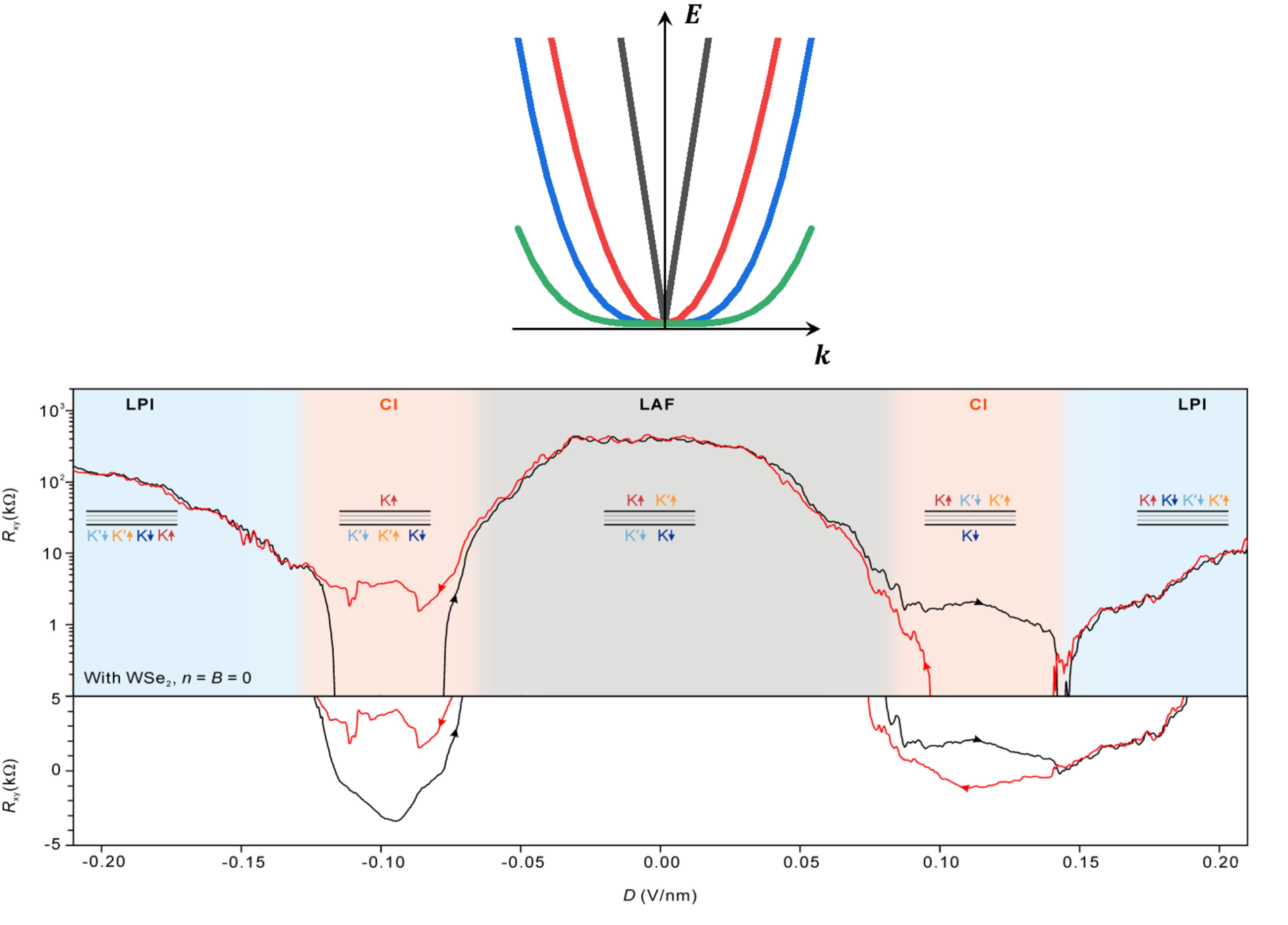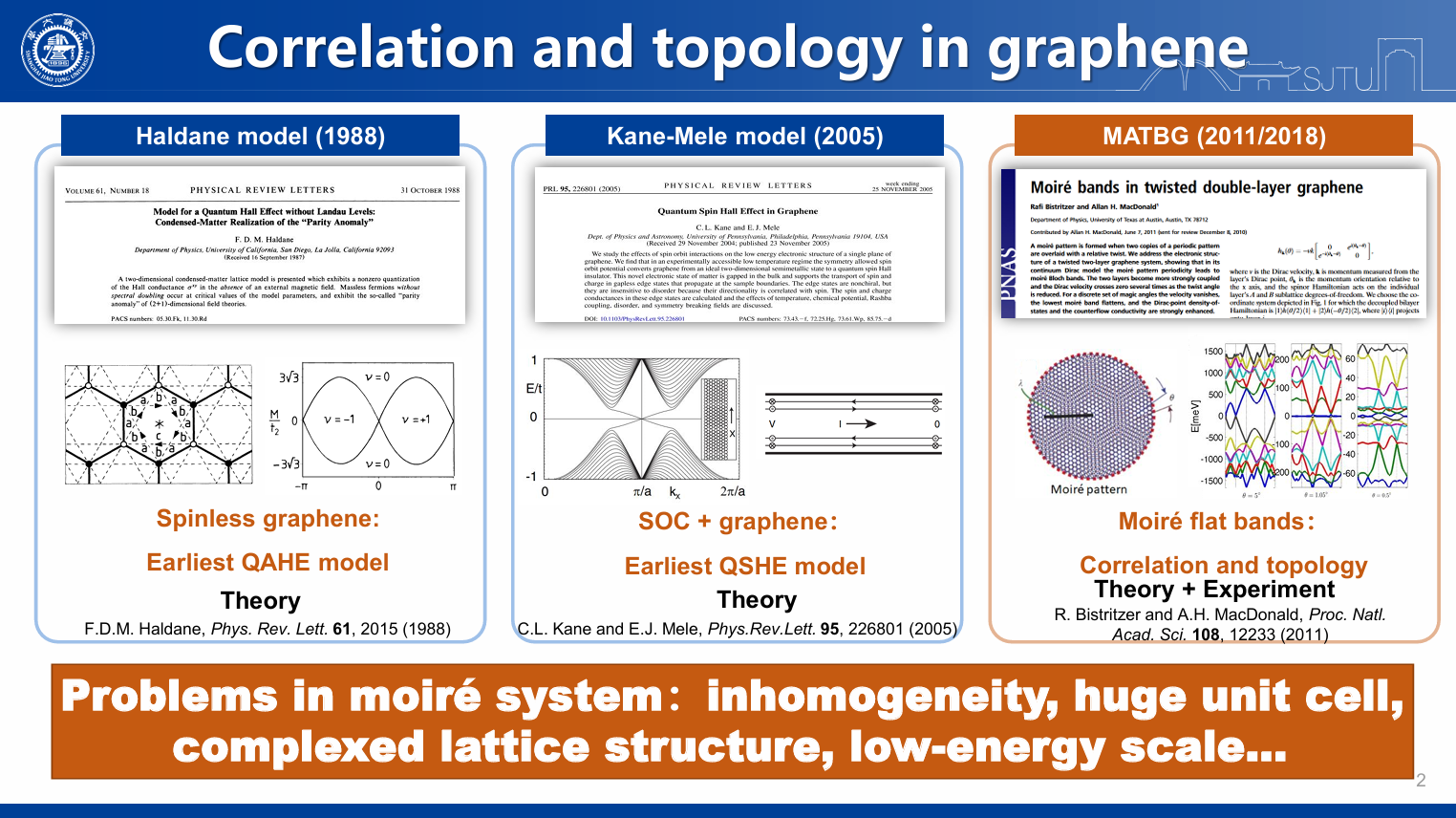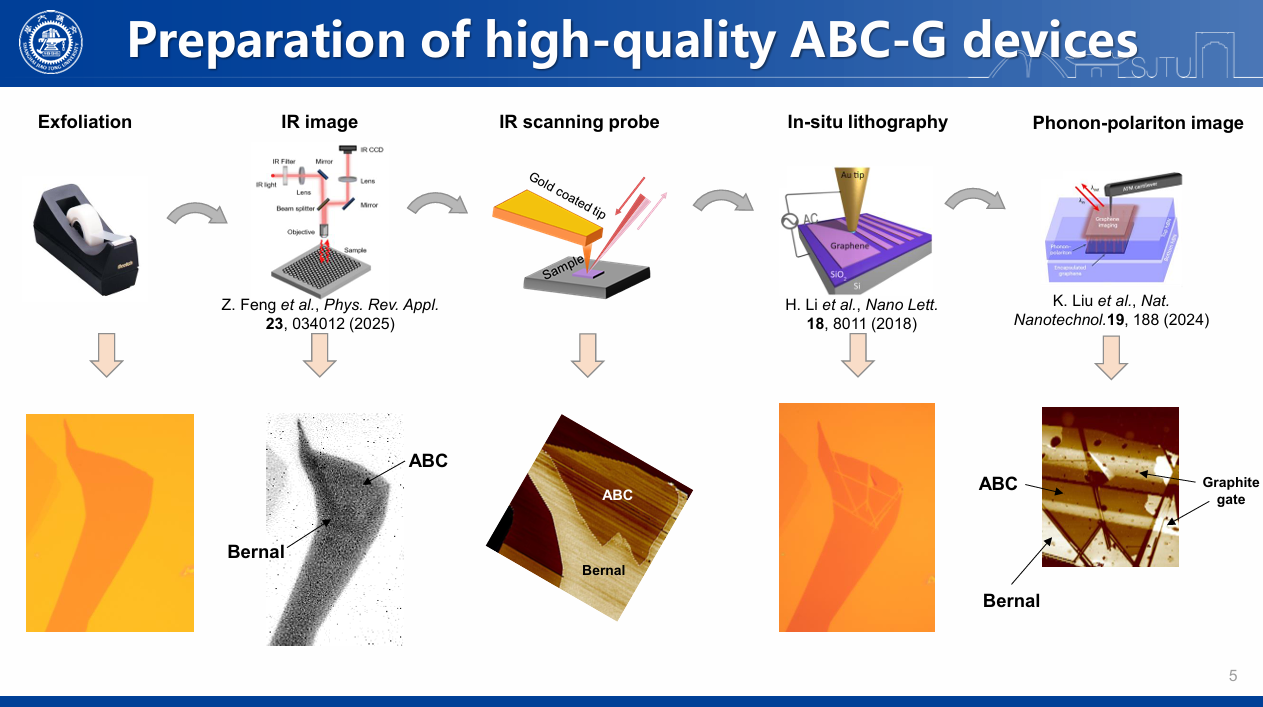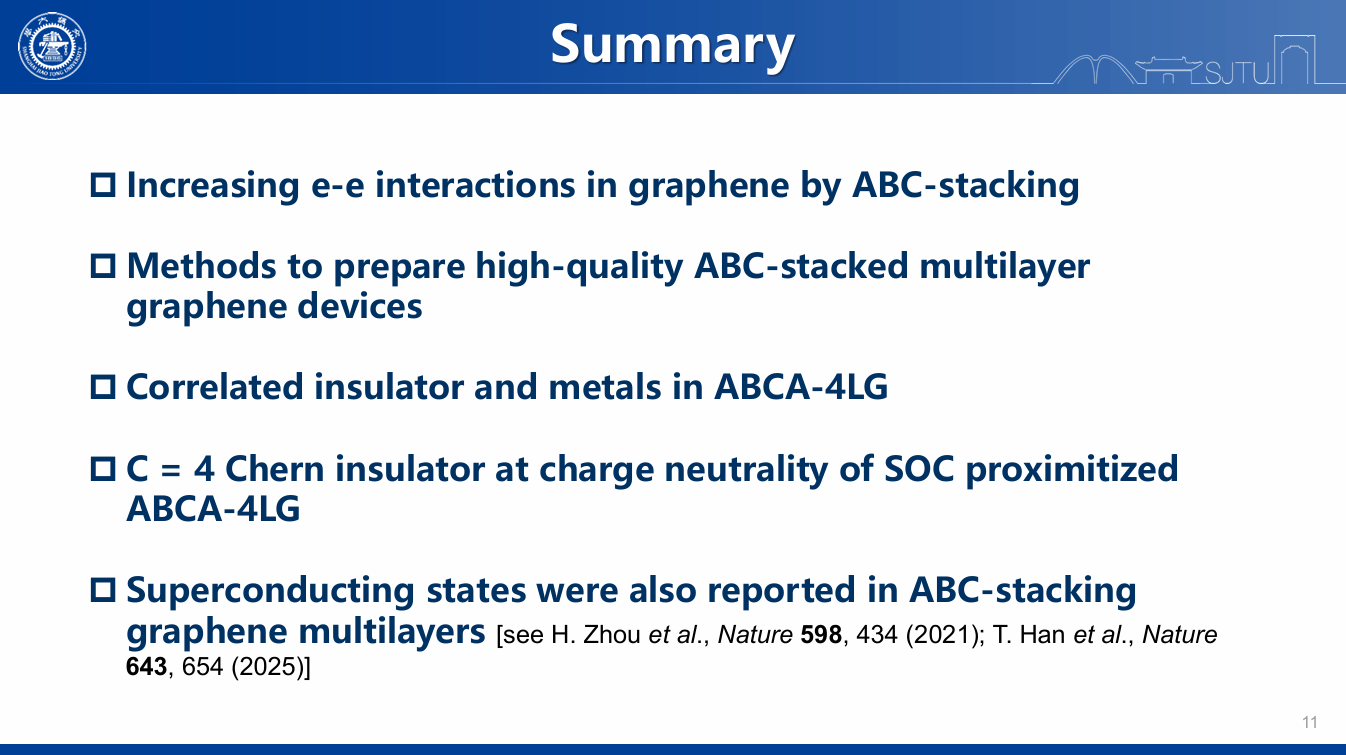Electron-electron interactions can be significant in graphene with an ABC-stacking sequence. By developing innovative experimental techniques, we successfully fabricated high-quality ABC-stacked multilayer graphene and observed a correlated insulating state at charge neutrality, beginning with ABCA-tetralayer. Furthermore, by introducing proximity-induced spin-orbit coupling, at the charge neutrality point of ABCA-tetralayer, we achieved a topological Chern insulator with a layer-number-dependent Chern number of four.




The work at SJTU was supported by National Key Research Program of China (Grant Nos. 2021YFA1400100 and 2020YFA0309000), NSF of China (Grant Nos. 12350005 and 12174248), Shanghai Science and Technology Innovation Action Plan (Grant No. 24LZ1401100) and the Yangyang Development Fund.
1. F.D.M. Haldane, Model for a quantum Hall effect without Landau levels: condensed-matter realization of the "parity anomaly", Phys. Rev. Lett. 61, 2015 (1988).
2. C.L. Kane and E.J. Mele, Quantum spin Hall effect in graphene, Phys. Rev. Lett. 95, 226801 (2005).
3. R. Bistritzer and A.H. MacDonald, Moiré bands in twisted double-layer graphene, Proc. Natl. Acad. Sci. 108, 12233 (2011).
4. F. Zhang, B. Sahu, H. Min, and A.H. MacDonald, Band structure of ABC-stacked graphene trilayers, Phys. Rev. B 82, 035409 (2010).
5. F. Zhang, J. Jung, G.A. Fiete, Q. Niu, and A.H. MacDonald, Spontaneous quantum Hall states in chirally stacked few-layer graphene systems, Phys. Rev. Lett. 106, 156801 (2011).
6. H.S. Lipson and A.R. Stokes, The structure of graphite, Proc. R. Soc. Lond. A 181, 101 (1942).
7. Z. Feng, W. Wang, Y. You, Y. Chen, K. Watanabe, T. Taniguchi, C. Liu, K. Liu, and X. Lu, Rapid infrared imaging of rhombohedral graphene, Phys. Rev. Appl. 23, 034012 (2025).
8. H. Li, Z. Ying, B. Lyu, A. Deng, L. Wang, T. Taniguchi, K. Watanabe, and Z. Shi, Electrode-free anodic oxidation nanolithography of low-dimensional materials, Nano Lett. 18, 8011 (2018).
9. K. Liu, J. Zheng, Y. Sha, B. Lyu, F. Li, Y. Park, Y. Ren, K. Watanabe, T. Taniguchi, J. Jia, W. Luo, Z. Shi, J. Jung, and G. Chen, Spontaneous broken-symmetry insulator and metals in tetralayer rhombohedral graphene, Nat. Nanotechnol. 19, 188 (2024).
10. Y. Liu, Z. Li, S. Jiang, M. Li, Y. Gu, K. Liu, Q. Shen, L. Liu, X. Liu, D. Guan, Y. Li, H. Zheng, C. Liu, K. Watanabe, T. Taniguchi, J. Jia, T. Li, G. Chen, J. Liu, C. Li, Z. Shi, and S. Wang, Real-space study of zero-field correlation in tetralayer rhombohedral graphene, arXiv:2412.06476 (2024).
11. Y. Sha, J. Zheng, K. Liu, H. Du, K. Watanabe, T. Taniguchi, J. Jia, Z. Shi, R. Zhong, and G. Chen, Observation of a Chern insulator in crystalline ABCA-tetralayer graphene with spin-orbit coupling, Science 384, 414 (2024).
12. H. Zhou, T. Xie, T. Taniguchi, K. Watanabe, and A.F. Young, Superconductivity in rhombohedral trilayer graphene, Nature 598, 434 (2021).
13. T. Han, Z. Lu, Z. Hadjri, L. Shi, Z. Wu, W. Xu, Y. Yao, A.A. Cotten, O.S. Sedeh, H. Weldeyesus, J. Yang, J. Seo, S. Ye, M. Zhou, H. Liu, G. Shi, Z. Hua, K. Watanabe, T. Taniguchi, P. Xiong, D.M. Zumbühl, L. Fu, and L. Ju, Signatures of chiral superconductivity in rhombohedral graphene, Nature 643, 654 (2025).



